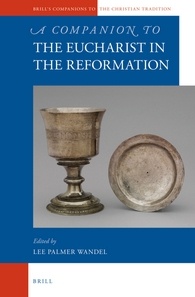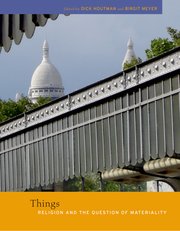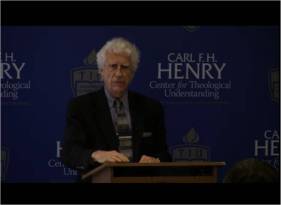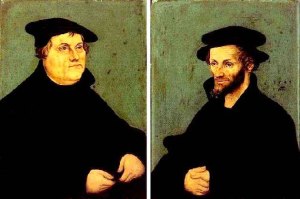It has been a long while, since I posted here. In my archives I found some notes about Eucharistic Presence from about 10 years ago, which I like to share with you. In the Reformation the Lord’s Supper was one of the most important theological topics. In the controversy with Rome, the theologians of the Reformation developed alternative views of the Lord’s presence in Holy Communion. Unfortunately, Luther, Calvin and Zwingli, to mention only the three best known Reformers, didn’t agree which option was best.
For the moment, I won’t work out how these differences historically developed or how they may exactly be spelled out.
Instead, I’d like to sketch four models of interpreting Christ’s presence in the Holy Meal. These models, I believe, are not mere theoretic options, but – to speak so – ‘live options’. We are talking about the way how pastors and members of the church view, consciously or unconsciously, the Lord’s Supper.
- Symbolic presence. With symbolic presence I mean those thoughts and theories that rely on a symbolic theory to explain how the Lord is present in the Eucharist. This seems to me a especially in Roman Catholic circles a viable theory. Under the influence of French philosophers like Ricoeur and others, the old dogma of transsubstantion has, at least in Europe, been largely displaced by symbol-theories. Note, that according to this line of thought the presence in the Eucharist requires no specific action of God, apart from the original institution of the sacrament.
- Ritual presence. This model is akin to the symbolic presence model. Rituals are commonly understood as symbolic actions, that is: actions with the aid of, or on the basis of, symbols. However, it is very well possible to make a distinction between these two models. In contrast with the first model, theories of ritual presence emphasize ritual action, instead of the symbol itself, as a vehicle of meaning. In the Zwinglian tradition we find examples of this model. Zwingli himself taught his congregation that not bread and wine, but they themselves were the Body of Christ, in celebrating the Lord’s Supper.
- Spiritual presence. The third model is called ‘spiritual’, which might give rise to some misunderstandings. The aforementioned Zwinglian tradition is sometimes called ‘spiritual’, to mark the contrast with ‘real’ presence. However, by ‘spiritual’ I mean those theories, which explain Christ’s presence in the Eucharist in terms of the Holy Spirit. John Calvin is of course the best known representative of this insight. In contrast with Zwingli, Calvin did not care much about the specific forms of the Eucharistic rite. The key in his understanding of the Communion is the so-called ‘Sursum Corda’: “Lift up your hearts…”. In doing that the participants will experience that Christ is present by his Spirit.
- Local presence. The difference between Luther and Calvin with regard to Christ’s presence in the Eucharist can be largely traced back to different opinions with regard to the Ascension of Christ. While Luther held that Christ’s body in heaven is omnipresent (thanks to the communicatio idiomatum), whereas Calvin emphasized the heavenly location of Christ’s body (the so-called extra calvinisticum). This model tends therefore to be Lutheran in its intention. Crucial in this model is at least an interpretation of Christ’s Eucharistic presence in terms of spatiality and locality.
It is important to stress that these options are not mutually exclusive. It’s perfectly possible to combine for example aspects of the ritual presence and the spiritual presence model. However, I believe that an approach like this can clarify some of the important differences with regard to the Lord’s Supper.

 I’m happy to announce the publication of my article “‘Naturally More Vehement and Intense’: Vehemence in Calvin’s Sermons on the Lord’s Supper”, in Reformation & Renaissance Review, vol. 20,1 (2018), 70-81. The online (open access!) and printed versions are available at the RRR’s
I’m happy to announce the publication of my article “‘Naturally More Vehement and Intense’: Vehemence in Calvin’s Sermons on the Lord’s Supper”, in Reformation & Renaissance Review, vol. 20,1 (2018), 70-81. The online (open access!) and printed versions are available at the RRR’s 



 ateriality (Religious Studies). Van den Hemel’s approaches Calvin’s eucharistic theology from a semiotic angle. That seems to me a very promising route. At the same time, Van den Hemel turns out to be theologically well informed, acquainted with the books of Paul Helm, Heiko Oberman, David Willis and Alister McGrath. He highlights the ‘extra-calvinisticum’ as an important interpretive key to Calvin’s semiotics of the Lord’s Supper. Rightly so, I think. In fact, Van den Hemel’s contribution is part of a larger picture. It strikes me that there is a lot of attention in Literary Studies for Calvin’s theology of the Lord’s Supper. The amount of references to his sacramental theology in English Renaissance Studies (Shakespeare, John Bale, etc.) for example is amazing. But the interest is one-sided. So far, there seems to be hardly any readiness within Calvin research to learn from the field of Literary Studies. That is a pity, according to me. In fact, it gives me food for thought that some of the most promising recent contributions I read about Calvin’s theology of the Lord’s Supper stem from non-theologians. It might open new avenues in Calvin research.
ateriality (Religious Studies). Van den Hemel’s approaches Calvin’s eucharistic theology from a semiotic angle. That seems to me a very promising route. At the same time, Van den Hemel turns out to be theologically well informed, acquainted with the books of Paul Helm, Heiko Oberman, David Willis and Alister McGrath. He highlights the ‘extra-calvinisticum’ as an important interpretive key to Calvin’s semiotics of the Lord’s Supper. Rightly so, I think. In fact, Van den Hemel’s contribution is part of a larger picture. It strikes me that there is a lot of attention in Literary Studies for Calvin’s theology of the Lord’s Supper. The amount of references to his sacramental theology in English Renaissance Studies (Shakespeare, John Bale, etc.) for example is amazing. But the interest is one-sided. So far, there seems to be hardly any readiness within Calvin research to learn from the field of Literary Studies. That is a pity, according to me. In fact, it gives me food for thought that some of the most promising recent contributions I read about Calvin’s theology of the Lord’s Supper stem from non-theologians. It might open new avenues in Calvin research.





